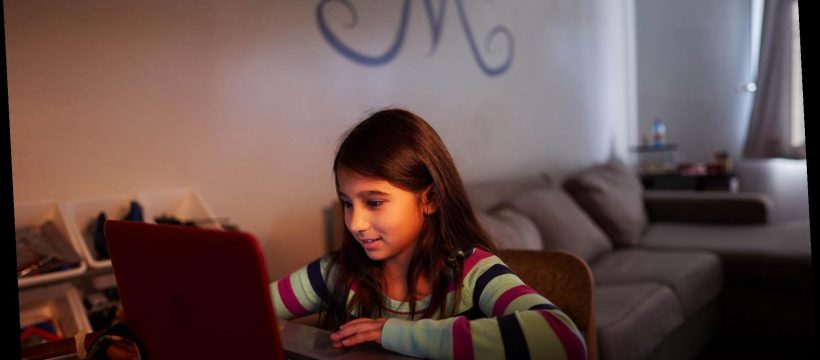More On:
eyes
Some COVID-19 patients left with nodules on eyeballs, study finds
The 8 best mascaras and fake eyelashes for National Lash Day 2021
People are damaging their eyes trying to kill COVID-19 with UV lamps
COVID-19 victims’ autopsies detect virus in eyeballs: study
Doctors are sounding a warning for parents with grade-school kids who rub their eyes frequently, squint or complain of blurry vision.
That’s because they could be showing symptoms of myopia, or nearsightedness, which is surging right among elementary students because of all the screen time they’re racking up during lockdown.
Jamie Melisi took her 7-year-old daughter Juliana in for an eye exam after she noticed the second-grader wasn’t acting like herself, especially right after a day of remote learning.
“She was squinting a lot and suffering headaches,” Melisi, of Staten Island, told The Post.
Juliana, who attends public school, lucked out and didn’t need glasses, but Melisi had to lay down the law: The laptop was for schoolwork only.
At Pediatric Ophthalmic Consultants, a private practice on the Upper West Side, pediatric ophthalmologist Dr. Milan Ranka sees patients as young as Juliana who do need specs because of their long stretches of close-up work.
“It’s surprising,” Ranka told The Post. “We’re seeing nearsightedness in the lower grade levels throughout now — even in first-, second- and third-graders — and we never saw that before.”
The uptick is what Ranka considers an offshoot of a surge in tweens and teens that started roughly a decade ago, when the first tablets and smartphones hit stores.
Like the elementary kids today, the junior high and high school students talked to Ranka about blurry vision, double vision, headaches and difficulty reading. Being stressed out and not getting enough sleep can be factors, too.
“These complaints aren’t abnormal in high school or even junior high — they are under more pressure and they are sleeping less,” he said, “but we’re not used to hearing the same things from younger kids.”
Optician Sam Pirozzolo is filling more eyeglass prescriptions for nearsightedness at his Steinway Eye Care Centers in Queens, and he understands why after he hears parents tell him the same story over and over: Their kids roll out of bed and plop down in front of their computers for as many as 18 hours, going to school or playing games — often without a light on.
“Now, they’re in a dark room, not looking out the window, not looking across the room, focusing on a distance 2 feet away — all day, seven days a week,” Pirozzolo told The Post.
And the phenomenon is happening in other cities in lockdown, an Emory University study shows. In China’s Feicheng, population 1 million, schools screened 123,535 boys and girls — first- through sixth-graders — after six months in quarantine and found the myopia rate for the 6-, 7- and 8-year-olds had skyrocketed. The biggest rate increase was for the first-graders — from roughly six percent to nearly 22 percent.
Preventing or keeping myopia from progressing is key since the condition can lead to more serious eye ailments later in life such as cataracts and glaucoma, both Ranka and Pirozzolo said.
Ranka’s tips include upping your laptop’s contrast and print size, and looking at bigger screens farther away for movies and games. And during class or work, he likes the 20-20-20 rule: For every 20 minutes of close-up activity, look 20 feet away for 20 seconds.
For Pirozzolo, the best medicine for kids will be for life to get back to normal: “Going back to school would be a good thing for every kid’s eyes.”
Share this article:
Source: Read Full Article


